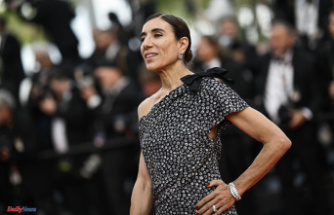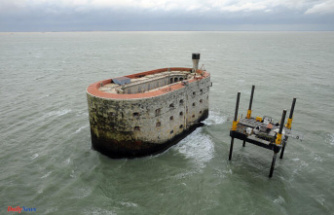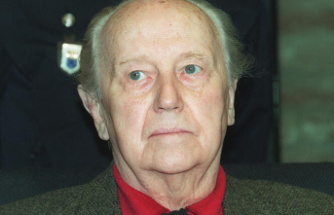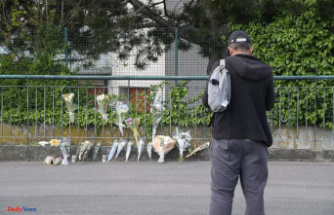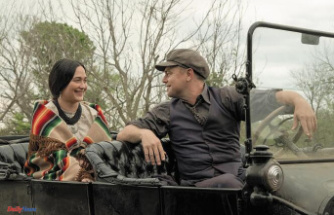Come spring, we might all be dressing in pillbox hats, Technicolor frocks cut for dancing and 1940s-style satin evening dresses — pieces worn in three of this year’s Oscar-nominated films for costume design. There’s nothing like a lavishly produced prestige picture (in this case, “Jackie,” “La La Land” and “Allied,” respectively) to jump-start long-dormant fashion trends.
“Movies have been influencing fashion since the beginning,” says film and fashion historian Kimberly Truhler. “When people [first] saw these moving images of actresses [such as silent stars] Mary Pickford or Gloria Swanson, they started emulating them.”
Here are eight films nominated over the years for Best Picture or Best Costume Design Oscars that changed the way we dressed, from the period gangster film “Bonnie and Clyde” to the disco-era crime caper “American Hustle.”
‘The Great Gatsby’ (2013)
Fashion had been in the throes of an early-20th-century revival even before Baz Luhrman’s unorthodox adaptation of “The Great Gatsby,” which won Best Costume Design, brought the Roaring ’20s back to the silver screen.
“Designers had just exhausted the 1950s and ’60s, and were ready for something new,” says Truhler. “You had this window where all the designers went crazy for art deco fashion.”
Ralph Lauren, Marc Jacobs and Marchesa produced 1920s drop-waist dresses loaded with fringe and beads for Spring 2012. That year, starlets Evan Rachel Wood, Zoe Saldana, Camilla Belle and Bérénice Bejo were all photographed in the same Gucci flapper frock, while Katy Perry arrived at a Museum of Contemporary Art exhibition in Jazz Age cosplay.
Set in the late 1970s, “American Hustle,” nominated for Best Costume Design, featured flame-haired beauty Amy Adams in an array of sexy wrap dresses, jumpsuits and disco-fabulous frocks. Audiences and designers lapped it up, aided by expert branding as Adams hit the red carpet in flared pantsuits and risqué jersey gowns.
Designers from Reem Acra to Jenny Packham showcased a range of Halston-worthy halter dresses for Spring 2014, and that same season Betsey Johnson staged a “Rihanna-meets-‘American Hustle’ ”-themed runway. Even as recently as January, stars at the Golden Globes still channeled Studio 54 chic in clingy dresses with plunging necklines.
“[Costume designer] Michael Wilkinson is really good at tapping into eras and finding the gold in them,” says Truhler. “We’re still seeing ’70s disco style due to Amy [Adams’ costumes].”
When Keira Knightley slinked on screen in a 1930s-style emerald silk gown in the period drama “Atonement,” which received a Best Picture nomination, women the world over swooned.
“Of all the [Oscar-nominated] costumes we’ve ever exhibited, people went most crazy for the green dress from ‘Atonement,’ ” says Kevin Jones, curator at the Fashion Institute of Design & Merchandising Museum in Los Angeles. “That was the dress of the year.”
The ensemble, with its seductively low back, inspired legions of copycats, with prom brands such as Faviana and Victoria Prom Dresses rushing to produce inexpensive replicas, and Etsy seamstresses whipping up their own handmade versions. (You can still custom-order one for $1,500 on that site.)
The year “Atonement” was in the Oscars run, the red carpet was awash in green, with Amy Adams, Sofía Vergara and Knightley’s then-adolescent co-star Saoirse Ronan sporting the hue for the ceremony.
“You can’t predict when something an actor wears [in a movie] is going to capture the audience’s imagination like that,” says Jones. “The dress was so beautiful, so ethereal — and because Keira Knightley was wearing it, everyone loved it.”
Tapping cult design label Rodarte to dress the waifish Natalie Portman as a deranged ballerina for the psychological-horror flick “Black Swan” was a stroke of fashion genius.
“Having fashion designers doing the costumes for the film was a big deal,” says Truhler. In response, magazines including Vogue featured dance-inspired spreads, and designers churned out frothy confections.
Fancy French labels such as Chloé and Lanvin, as well as mass retailers including Club Monaco, produced leotards, diaphanous skirts and ballet flats for Spring 2011. Also on the runway that season: black-and-white feathers, courtesy of Chanel and Alexander McQueen, and a bell-shaped skirt made entirely out of swan’s down from Oscar de la Renta.
The film nabbed a nomination for Best Picture, but failed to receive one for Best Costume design; many fashion bloggers and editors were upset about the snub.
Nevertheless, “it definitely had an impact,” says Truhler. “It brought that ballerina style back.”
Kate Hudson’s glamorous groupie, Penny Lane, in Cameron Crowe’s rock ’n’ roll epic “Almost Famous,” nominated for Best Picture, launched a mania for early-’70s low-slung bell bottoms, long sweaters, shearling-trimmed coats and cropped peasant blouses. That year, Beyoncé performed with Destiny’s Child in a skimpy handkerchief top that evoked Hudson’s in the film, and in 2001, designers such as Dolce & Gabbana and Tom Ford for Yves Saint Laurent produced bohemian lace-up tops, fringed skirts and flared jeans.
“Designers are always looking for what’s in the zeitgeist and what era is stimulating for them,” says Truhler. “And ‘Almost Famous’ had this late-’60s, early-’70s rocker vibe that commingled with the boho chic [of the early 2000s. It] focused its attention on one aspect of [’70s style] and distilled it down to these great pieces, like that coat with the fur trim. It gave designers what was good about that era and allowed them to run with that.”
When the ultraviolent lovers-on-the-lam flick “Bonnie and Clyde,” nominated for Best Picture, came out in 1967, Life magazine declared that its “gun-toting” star Faye Dunaway had “already done for the beret what [Brigitte] Bardot did for the bikini.”
Dunaway, with her glossy, blonde bob and slightly cocked headgear, launched a 1930s fashion revival with her turn as the small-town-girl-turned-bank-robber, imbuing Dust Bowl-era calico dresses, plaid trench coats and knit turtlenecks with contemporary swagger.
“Immediately, people were showing up everywhere in the beret,” says Tuhler. “At the movie’s premiere in Paris, it was basically this sea of berets.”
“By the time ‘Bonnie and Clyde’ came out, it really fit in with what was happening in fashion and culture,” says Jones. Dunaway’s contemporary hairdo, militant moxy and anti-establishment attitude struck a chord with young, counterculture audiences. “It tapped into a contemporary aesthetic.”
The 1970 tear-jerker about WASPy coeds catapulted stadium cloth coats, knit sweaters and pleated skirts into the mainstream. Before “Love Story,” nominated for Best Picture, preppy style was mostly popular at East Coast women’s colleges and Ivy League schools, “but it wasn’t necessarily something that the whole country was wearing,” says Tuhler. “It [was] the Ali McGraw effect.”
Jones adds that McGraw’s authenticity — see those influential untamed eyebrows — made her style accessible to audiences.
“That was how she dressed in real life,” he says. She even donned a crocheted cap that echoed the hat her character wore in the film to the Oscars the year “Love Story” was nominated, in 1971. “They even started to [sell] patterns so you could make your own knit caps.”
Our editors found this article on this site using Google and regenerated it for our readers.


